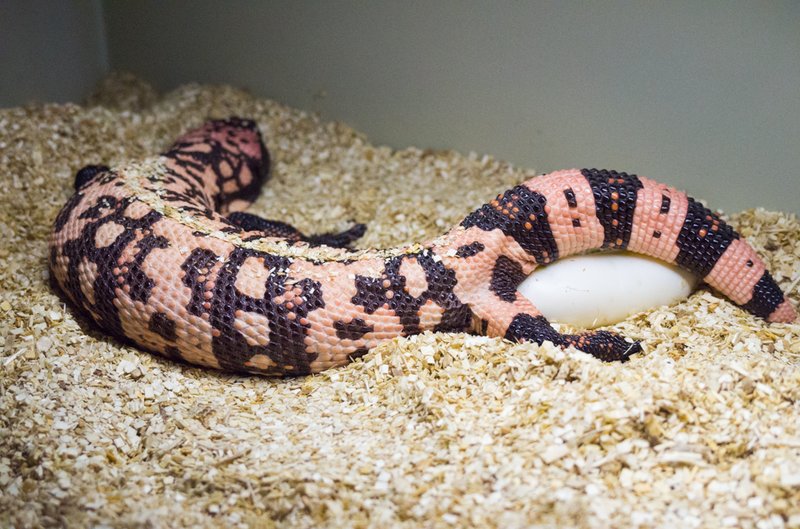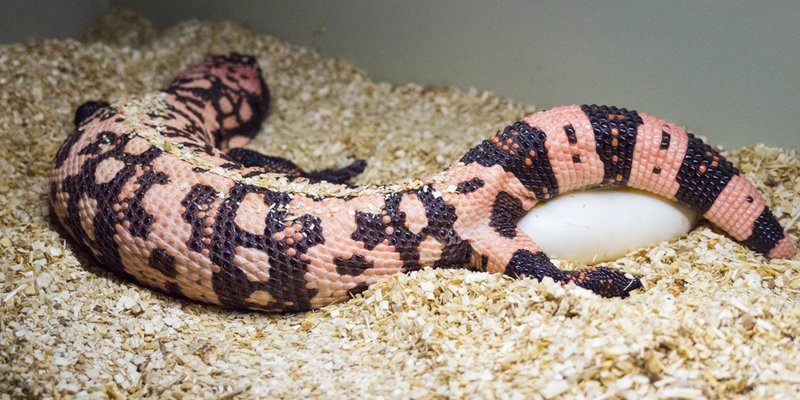
Gila monsters are one of only a few venomous lizard species, and their unique breeding habits add an intriguing layer to their biology. Understanding how they mate and produce offspring could help with conservation efforts, especially since these fascinating creatures are at risk due to habitat loss. So, let’s dive into the world of Gila monsters and explore their breeding and reproductive behaviors step-by-step, like we’re sharing a cozy cup of coffee.
Understanding Gila Monsters: A Brief Overview
Gila monsters (Heloderma suspectum) are native to the southwestern United States and northwestern Mexican regions. They are known for their striking black bodies adorned with bright orange and yellow patterns, which make them one of the most recognizable lizards. Gila monsters are heavy-bodied, reaching lengths of up to 24 inches, and are usually found in arid and semiarid habitats.
What’s particularly interesting is their lifespan; Gila monsters can live for over 20 years in the wild, and even longer in captivity. This long lifespan creates unique challenges and opportunities for reproduction. The timing and conditions for breeding are essential because, like many reptiles, Gila monsters have a specific breeding season that aligns with their environmental conditions.
The Gila monster is not just a fancy-looking reptile; it plays a critical role in its ecosystem. They are opportunistic feeders and primarily eat small mammals, birds, and eggs. Their role as both predator and prey influences their mating behaviors, as finding a mate can sometimes be a challenge in the unpredictable desert environment.
Breeding Season: Timing and Conditions
Breeding season for Gila monsters typically occurs in the spring, usually from late April to early June. During this time, many reptiles become more active, and Gila monsters are no exception. They wear their hearts on their scales, quite literally, as they become more active in searching for mates.
Here’s the thing: temperature and moisture levels play a significant role in this part of their lives. The warm weather of spring awakens these lizards after their long winter hibernation. They emerge looking for food and potential partners. If conditions aren’t favorable—say, it’s too dry or temperatures fluctuate too much—Gila monsters may delay breeding.
Breeding isn’t just a casual affair for these lizards. Male Gila monsters often engage in some kind of competition to attract females. They may fight each other, using their powerful jaws and strong bodies. It’s like a wrestling match, but instead of a championship belt, the winner walks away with a chance to mate.
Territory and Mating Rituals
Once they’re out and about in search of love, Gila monsters need to establish their territory. The males are known for their territorial nature, often marking their space with scent. This helps communicate to other males that this area is claimed, reducing the chances of fighting.
When a male spots a female, he begins a courtship ritual that can include a series of head movements, tongue flicking, and sometimes even gentle nipping. It’s all like a charming dance of sorts. You might be wondering if this dance is effective. It certainly seems to be! The female’s response usually indicates her willingness to mate.
If all goes well, the male and female will engage in multiple mating sessions over several days, which can result in the female storing sperm for fertilization at a later date. This is quite handy, considering how timing and conditions can affect breeding. The female’s ability to store sperm allows her to choose the best conditions for laying her eggs.
Egg Laying: The Process
After a successful mating season, it’s time for the female Gila monster to lay her eggs. Typically, this occurs between late June and early July. The female will find a suitable nest site, which can be in sandy soil, underground burrows, or even old rodent burrows.
Interestingly, Gila monsters are oviparous, meaning they lay eggs instead of giving live birth. The average clutch consists of 2 to 7 eggs, which are leathery rather than hard like bird eggs. These eggs are quite vulnerable, and the female will typically abandon them after laying.
The incubation period lasts about 4 to 5 months, during which the eggs are left to fend for themselves. Nature is harsh, and not all eggs will develop successfully. The eggs need to be kept at a steady temperature and humidity level for the embryos to thrive.
Hatching and the First Stages of Life
Once the time is right, the hatchlings emerge from their eggs in the fall, usually around September to October. They are miniature versions of their parents, measuring about 6 to 8 inches long at birth. Think of them as tiny adventurers ready to explore the world!
Interestingly, Gila monster hatchlings are independent from the moment they break free from the egg. They don’t receive any parental care, which might sound a bit harsh. Instead, they rely on their instincts and the environment to survive. Mostly, their first meals consist of insects, small rodents, and even baby lizards.
These young Gila monsters must quickly adapt to their surroundings. They are also vulnerable to predators, which makes their survival even more crucial during their early life stages. The challenges they face as hatchlings set the stage for their survival as adults.
Conservation and Breeding Programs
Sadly, Gila monsters are listed as near threatened or vulnerable in many regions due to habitat destruction and illegal collection. Conservation efforts are essential in ensuring these creatures survive for future generations. Some wildlife organizations are even initiating breeding programs to help bolster Gila monster populations.
These programs aim to replicate their natural breeding conditions, taking notes from what we understand about their behaviors. By providing the right temperature, humidity, and nesting materials, these programs hope to encourage successful egg-laying and hatching.
In addition to breeding programs, educating the public about their importance in the ecosystem can also help. Gila monsters play a crucial role in keeping rodent populations in check, and losing them can disrupt local ecosystems.
The Fascination with Gila Monsters
From their unique physical appearance to their intriguing courtship rituals, Gila monsters are captivating reptiles. Their breeding and reproductive behaviors add another layer of complexity to these desert dwellers, making them fascinating subjects for both researchers and enthusiasts alike.
Whether you’re an aspiring herpetologist or someone who stumbles upon a Gila monster while hiking, understanding their breeding behavior can deepen your appreciation for them. Plus, recognizing the challenges they face can inspire conservation efforts.
In conclusion, the breeding and reproductive behavior of the Gila monster is a remarkable journey filled with challenges, adaptations, and survival. As we continue to learn more about these incredible creatures, let’s do our part to ensure they remain a vital part of our desert landscapes for generations to come.

